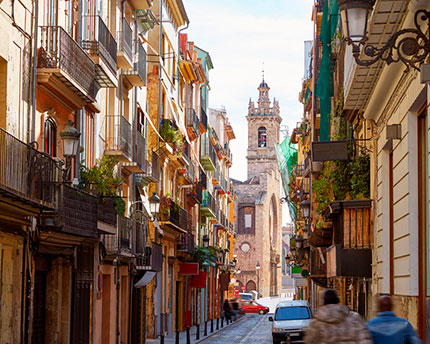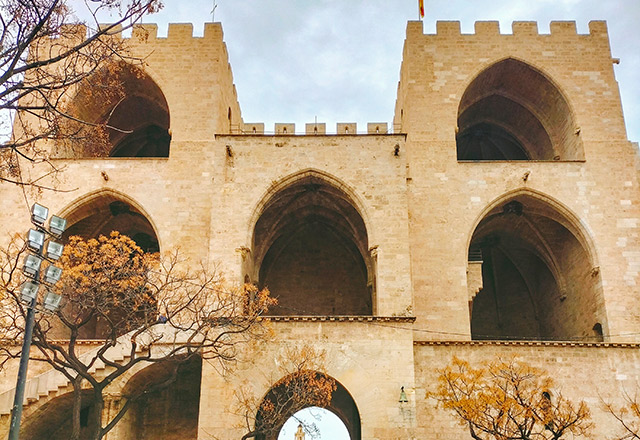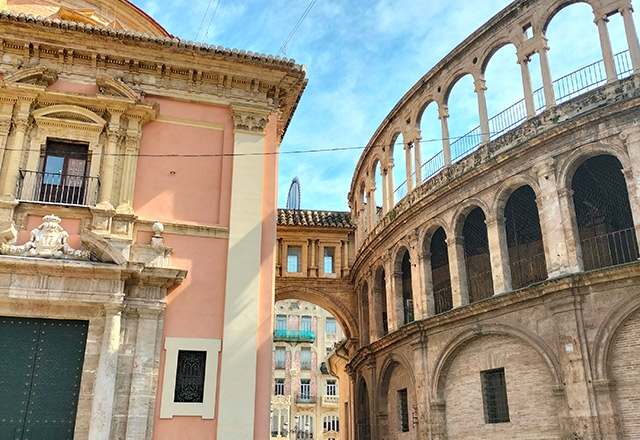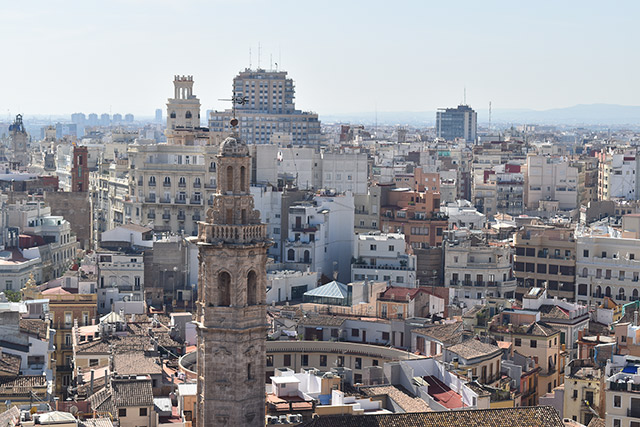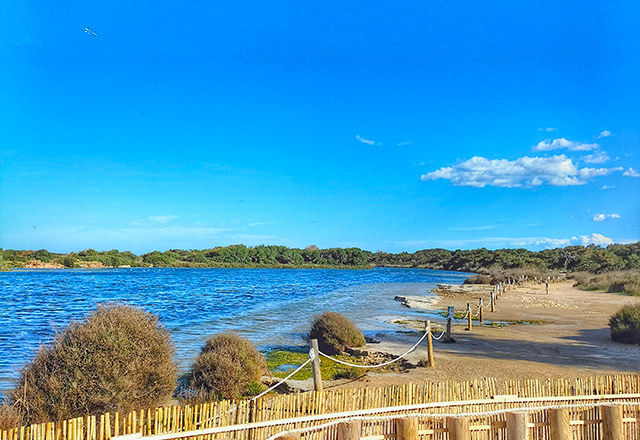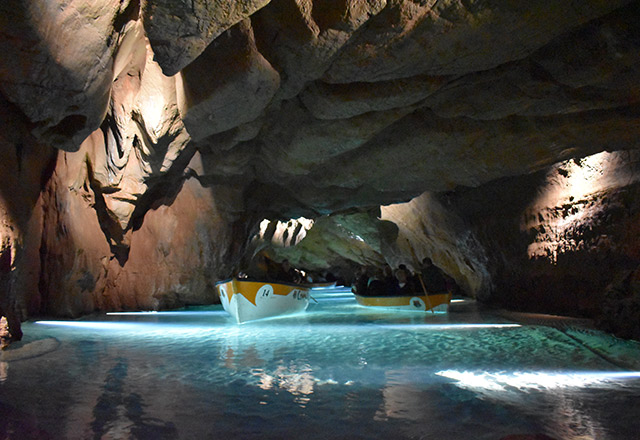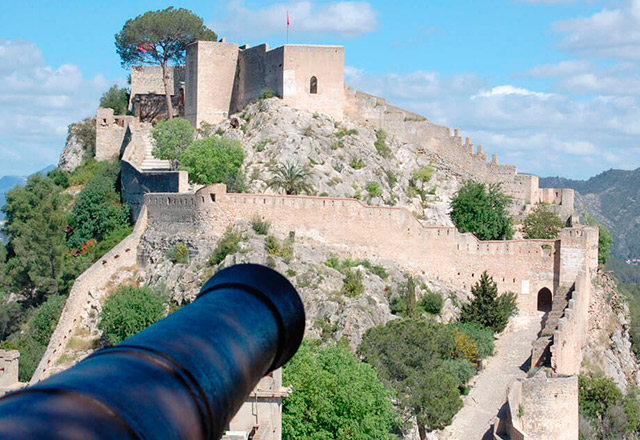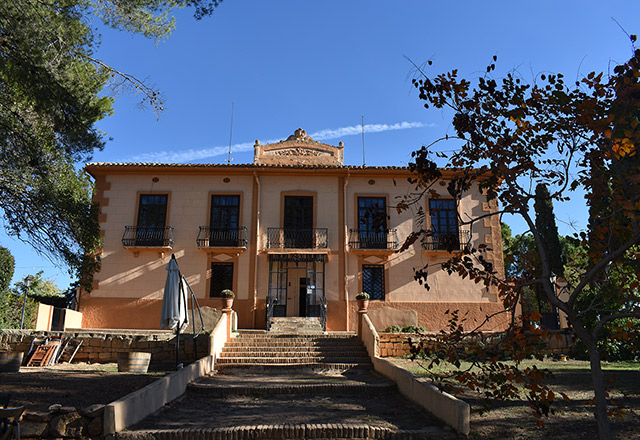The Chulilla Suspension Bridges Route [Ruta dels Ponts Penjants de Chulilla] takes you to stunning, precipitous and unexpected locations. You’ll be taken aback as you suddenly encounter cliffs and colossal rocky walls while the Túria river zigzags its way to the sea nearby. This impressive and vertiginous landscape is just under 63 kilometres from Valencia next to Chulilla in an area known as Las Hoces del Turia [the Túria river gorges].
The Suspension Bridges Route, also known as the Ruta de los Calderones or Senda de los Pantaneros, is suitable for all age groups, including children, because it doesn’t require any prior training. You can do it as a couple, with friends or by yourself. It was given its name in the 1950s when the nearby Loriguilla reservoir was constructed; two bridges were built to shorten the walk for workers staying in Chulilla: a suspension bridge and a solid bridge. Unfortunately, the bridges disappeared shortly afterwards in 1957 when they were washed away in a flood. In 2013, Chulilla Town Hall and the Provincial Government of Valencia had the idea of building reproductions of the original wooden bridges to boost inland, sports and nature tourism in this unique area of the Valencia Autonomous Region.
From the suspension bridges to Loriguilla reservoir
Start the Suspension Bridges Route by driving to the outskirts of Chulilla and follow the signposts that take you from the town towards the Ecoparque or the swamp road. Park your car in the designated open area and then it’s time to put on your comfy shoes and set off on an 8 kilometre route that is packed with thrills. The route takes you to the Loriguilla reservoir via the suspension bridges and the return journey can be completed in just over two and half hours. The time it takes will vary depending on the members of your group and their age.
The highest suspension bridge stretches over the river at an altitude of approximately 15 metres and has a very safe 21-metre span. The second bridge is lower (5.5 metres) but has a longer span of 28 metres. Both are extremely safe because they’re supported by steel cables that are anchored to the rock. They add to the charm of a route that offers hikers the chance to enjoy a stunningly beautiful setting with spectacular bathing areas close by, such as the “Remanso de las mulas” and the “Charco azul”.
Spectacular hiking routes
The Hoces del Turia [Túria river gorges] is a hugely valuable area in terms of its landscape and geology. The Suspension Bridges Route leads from the Hoz del Turia, also known as the Estrecho de los Cinglos and Cañón del Salto, to the Loriguilla reservoir where the waters of the Túria are stored. Make sure you climb up to the top of La Pedriza hill for the best view possible. You can try to imagine the ganxers working here, experts at a now non-existent job that consisted of transporting wood from the forests by floating it along the Túria river to avoid the obstacles found on land.
A visit to Chulilla is essential because it’s one of the most picturesque villages in the Valencian Autonomous Region. The village is at an altitude of 322 metres in a region known as Els Serrans. It has been inhabited since time immemorial—it’s located on the southern side of nearby Muela del Castillo where Bronze Age, Iberian, Roman and Moorish remains have been found. Another attraction is its castle, which was declared a Conservation Area in 1981 and was once used as a prison.
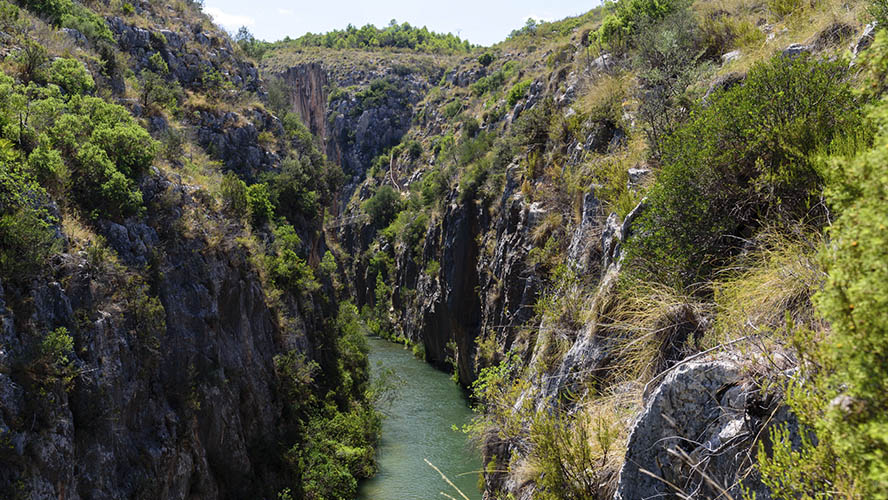
Chulilla castle
Chulilla sits perched high atop a hill and its village centre is staggered across different levels of the slope; the walls of the Arabic and Medieval fortress are at the highest point and from here you can gaze down at the course of the Túria river in all its splendour.
The landscape around Chulilla is full of surprises thanks to the uneven terrain and vertical rock faces. The rocky landscape of Muela del Castillo is so steep that in recent years it has become one of the top rock climbing challenges in Valencia province, alongside Montanejos, in Castellón province and El Peñón de Ifach and Morro de Toix in Alicante province.
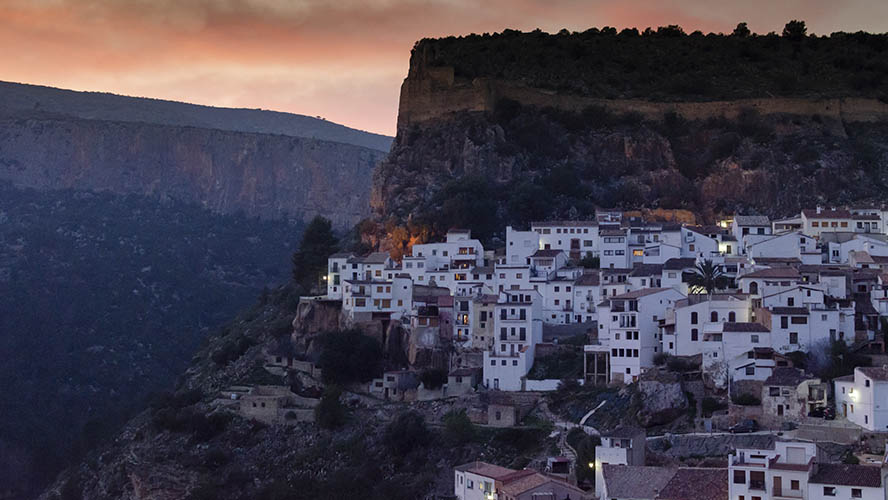
Hiking in the heart of nature
If you decide to follow the Suspension Bridges Route you may well meet climbers who come to Chulilla to go rock climbing among these immense natural walls. In fact, there’s a mountain shelter where sportspeople gather to organise different outdoor activities.
The Suspension Bridges Route and other hiking trails near Chulilla are perfect for enjoying the caprices of nature and listening to its marvellous sounds—even the sound of silence. A recommendation: if you love peace and calm try to avoid weekends and public holidays because the route is usually very busy at these times, especially if the weather is good.























































